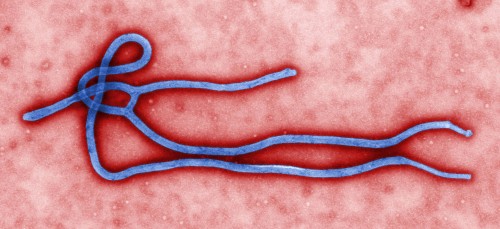 THE EBOLA VIRUS HAS CAUSED widespread panic in its biggest outbreak since its discovery with around 1,850 reported deaths.
THE EBOLA VIRUS HAS CAUSED widespread panic in its biggest outbreak since its discovery with around 1,850 reported deaths.The Ebola Virus Disease outbreak began in Guinea in December 2013. Having spread to Sierra Leone, Liberia, Senegal, and Nigeria, the Ebola outbreak has so far around 1,850 deaths confirmed. Symptoms of the disease include fatigue, headaches, seizures, internal bleeding, and death. There are currently no vaccines for the Ebola virus. Treatment, which may increase the chance of survival, for the disease involves preventing dehydration, balancing body salts, maintaining oxygen status, blood pressure, and treating other infections should they occur. The chance of someone contracting the infection, however, is reduced because the symptoms occur very quickly; those infected would be too sick to board a plane going overseas. Tom Frieden, head of the Centers for Disease Control and Prevention, recently reported that the world is losing the battle against Ebola.
In affected areas, there is only one doctor for every 100,000 people. Hospitals are understaffed and underfunded. Moreover, women, who make up the bulk of care givers, constitute 75 percent of Ebola deaths. On August 26, the World Health Organization reported that 120 of the 240 health care workers affected by the pathogen have died. To exacerbate matters, an eclectic array of regional suspicions of the government and hospitals encourage people to deny the existence of the outbreak. Reliance on witchcraft, black magic, and local cultural practices such as relying on magical healers leads to further contamination in unsanitary environments. Body parts, for example, are removed from corpses and used in rituals. Some protestors, convinced that the disease is an artifice, have even attacked hospitals.
It’s no secret that western Africa suffers from extreme poverty. It is difficult to reach patients in remote villages spread over vast areas. Poorly maintained dirt roads, which present a logistical nightmare to international aid organizations, are a common sight. At the same time, the poor quality of roads slows down the spread of the disease over borders.
As mentioned earlier, distrust in the government is widespread. National efforts to educate the local populace are often met with protests and riots. Additionally, the general public does not have access to reliable sources about Ebola. Word of mouth, therefore, is how many people come to learn about ways to stay safe. According to the WHO, the fatality rate for Ebola is 52 percent. Previous outbreaks have much higher fatality rates.
